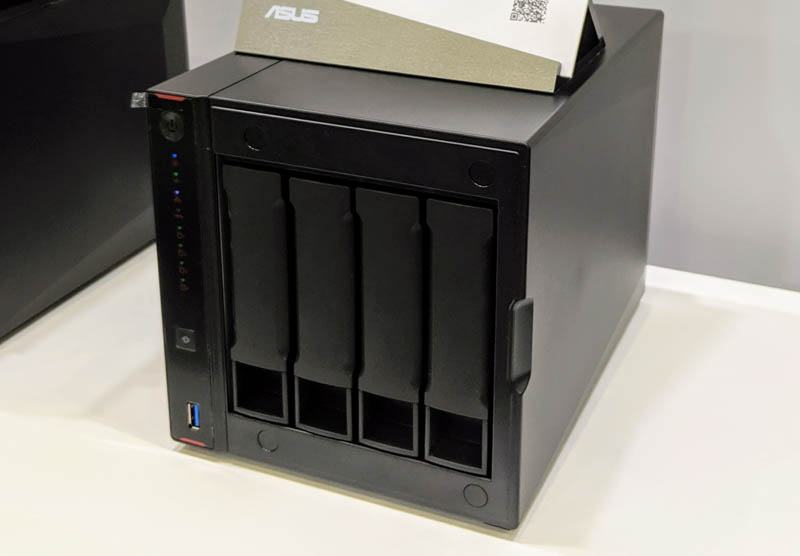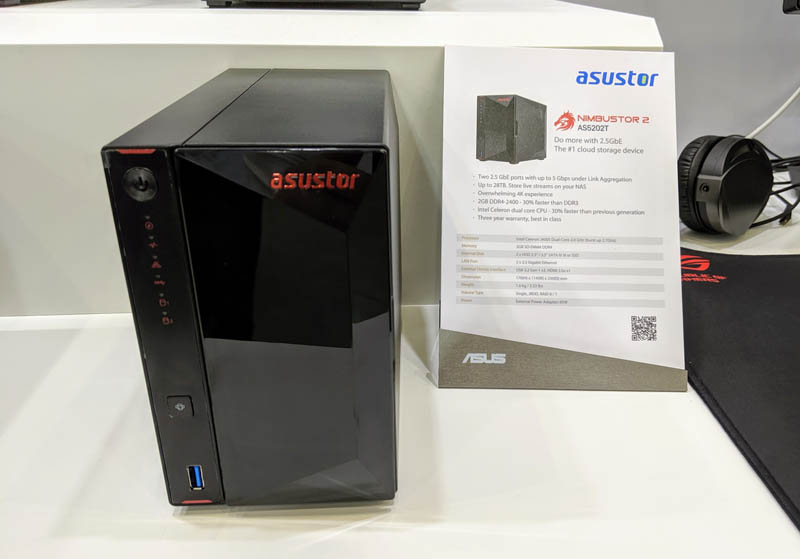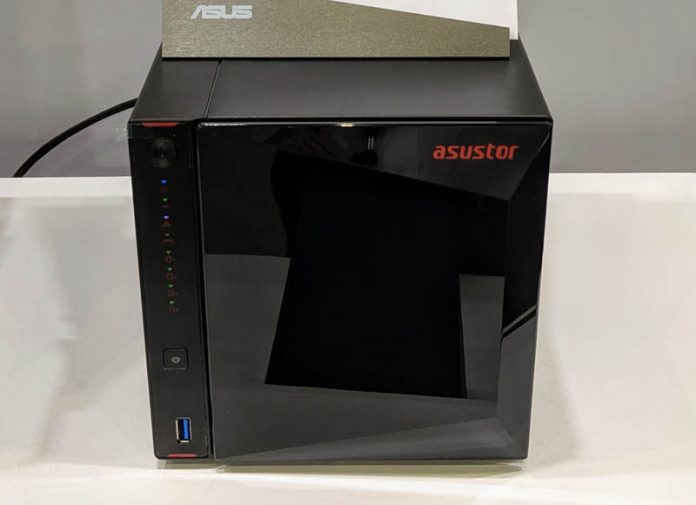At Computex 2019, Asustor showed off several multi-gig NAS units designed to bring significantly more performance to lower price points. Although the company did not disclose final pricing, we were told that the new Nimbustor 2-bay and 4-bay NAS units are set to be priced competitively. Since we have a lot of non-native English speakers on STH, “Nimbus” is from the Latin root for rainstorm or cloud. Asustor is evoking the trendy cloud name and “stor” for storage with the Nimbustor name.
Asustor Nimbustor AS5304T 4-bay NAS
Powered by a quad-core Intel Celeron J4105 SoC with 4GB of memory the ASUS Nimbustor AS5304T has plenty of power for basic NAS duties and playback via HDMI.
A standout feature is the dual 2.5GbE ports. Dual port 1GbE NAS units in this segment are common. By offering dual 2.5GbE ports, the Asustor Nimbustor AS5304T has a strong differentiation point.

Asustor is targeting the Nimbustor AS5304T at gamers, streamers, and creators. For other segments like the SOHO and SMB markets, we think that in 2019 2.5GbE is worthwhile if one does not plan to go to 10GbE where the Asustor AS4004T may make more sense.
Asustor Nimbustor AS5202T 2-bay NAS
The Asustor Nimbustor AS5202T is a 2-bay NAS, popular for lower-cost deployments, offers dual 2.5GbE ports. It is powered by a dual-core Intel Celeron J4005 CPU and 2GB of RAM.

This is a bit of overkill. Most users utilize 2-bay NAS units for RAID 1 arrays which provide redundancy in the event of a drive failure. That means that with current hard drives, the NAS should not be able to push more than 2.5Gbps from a RAID 1 array. Still, it allows a direct attachment to both an upstream switch as well as a workstation.
Final Words
The computer industry, especially in the edge and SMB space is at a transition point. Homes, offices, and other buildings are all wired for standard copper RJ45 networking. At the same time, the noise created by running high-speed communications over the ubiquitous copper network cables is reaching natural limits. 10Gbase-T at the edge has been around for years, but power, thermal, and range constraints have pushed back adoption. While the data center now sees SFP+ 10GbE as a low-cost commodity network option as it pushes past 100GbE and into 200GbE and 400GbE speeds, the edge is regressing to something those copper wires in walls can handle. Namely, multi-gig 2.5GbE. It is physics and economics conspiring to constrain network speeds. At the same time, with speeds of 2.5x traditional 1GbE, this is an enormous upgrade for many market segments.




